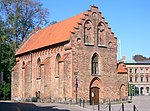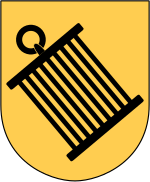Lund Observatory
1749 establishments in SwedenAstronomical observatories in SwedenAstronomical observatory stubsBuildings and structures in LundLund University

Lund Observatory was the official English name for the astronomy department at Lund University, and is currently used as a network of researchr within astronomy or other space related research projects, administered by the Department of Physics. Between 1867-2001 "Lund Observatory" was also the name of the Observatory building, which is now referred to as the "Lund Old Observatory". Prior to 2023, Lund Observatory was part of the Department of Astronomy and Theoretical Physics at Lund University until 2023, when that department was dissolved and its staff mostly transferred to the Department of Physics. It is located in Lund, Sweden.
Excerpt from the Wikipedia article Lund Observatory (License: CC BY-SA 3.0, Authors, Images).Lund Observatory
Svanegatan, Lund Municipality
Geographical coordinates (GPS) Address Nearby Places Show on map
Geographical coordinates (GPS)
| Latitude | Longitude |
|---|---|
| N 55.69958 ° | E 13.18785 ° |
Address
Svanegatan 10
222 24 Lund Municipality (Centrum)
Sweden
Open on Google Maps











